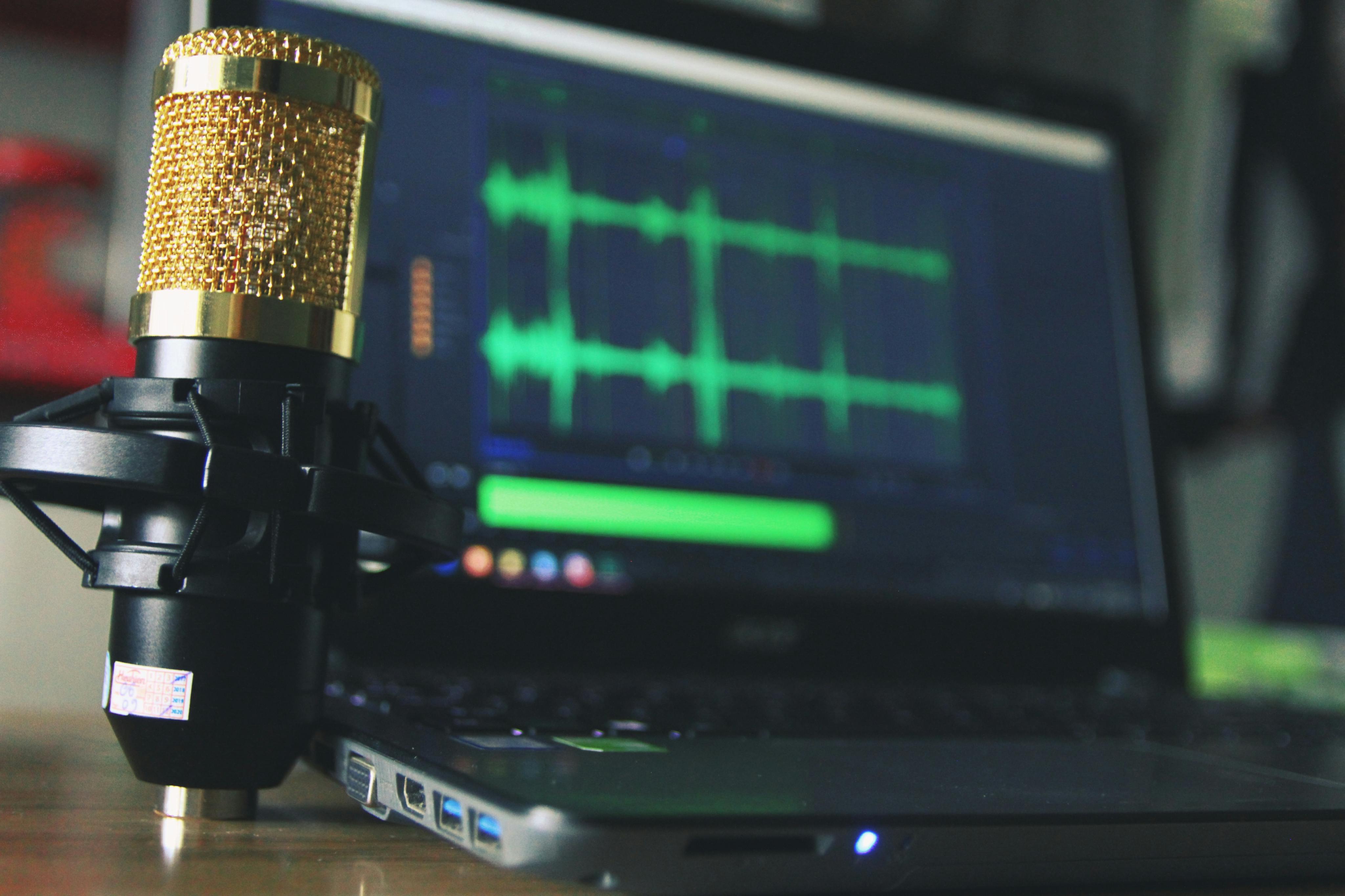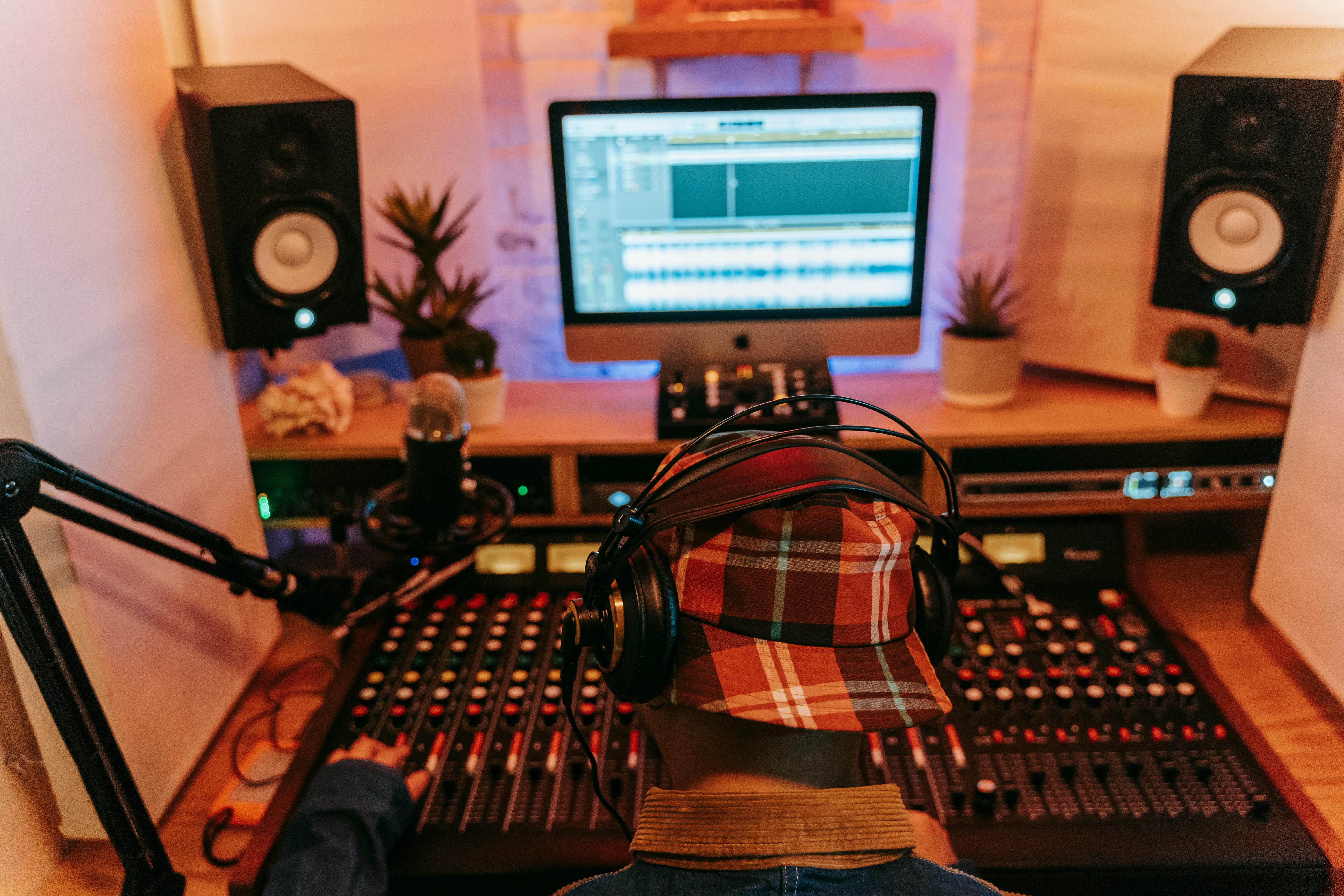Beginner's Guide to Home Recording Studio Setup
by WriteSeen
Creating the perfect home recording studio setup shouldn't be a daunting task. Musicians and artists across the globe face challenges transforming their spaces into sound sanctuaries, but clear goals and thoughtful design make all the difference.
We’ve gathered the essentials to make your studio the creative hub you need:
- Optimize your home recording studio setup with our expert tips.
- Discover acoustic tricks for superior sound, tailored to your space.
- Master the gear essentials to fuel your creative journey.
Understanding Your Creative Goals
Before you dive into configuring your home recording studio, it's crucial to pinpoint your creative goals. These goals are more than just checkpoints—they guide every choice you make and fuel your artistic journey. Whether you aim for top-notch sound quality, a streamlined workflow, or reaching industry standards, clarity in your goals sets the stage for success.
Why Clear Goals Matter
Your studio's configuration—gear, acoustics, and workflow—should sync with your aspirations. If you're crafting high-fidelity recordings, focus on premium mics and interfaces. For a seamless experience, choose user-friendly DAWs. Setting these goals is not just practical but empowering.
- Efficient Resource Use: When your goals are crystal clear, spending aligns with essential needs, maximizing every dollar and hour.
- Stay Ahead of Trends: Knowledge of industry standards and new tech ensures your studio remains relevant and innovative.
- Boost Productivity: Clear goals drive your sessions, turning creativity into tangible outputs.
Remember, in today’s world where independent creation is booming, having a purpose-driven home studio isn't just advantageous—it's essential. Your goals become the backbone of your creative strategy, keeping you focused and inspired as you carve your niche in the music landscape.

Choosing the Right Space: How to Optimize Your Room
Your room choice is a fundamental factor in setting up your home recording studio. The room dictates sound dynamics, impacts acoustics, and defines soundproofing needs. That's why selecting the best space is foundational before any gear purchases or arrangements.
Key Factors in Room Selection
The room you choose influences how sound behaves. You'll want to consider aspects like size, shape, and noise levels. Even in less-than-perfect spaces, strategic choices can revamp limitations.
- Room Size and Shape: Large spaces naturally create reverb, adding depth. Small rooms need added acoustic treatment to prevent echoes.
- Noise Levels: Quiet areas minimize the need for extensive soundproofing, saving resources and effort.
- Room Shape: Odd shapes are often better, reducing unwanted sound reflections and standing waves.
As multi-purpose spaces become more common, often merging work and creativity, adaptability is key. Consider your local building codes if you need serious soundproofing. This is all part of preparing your space for what you plan to create.
Acoustic Treatment: Why It Matters and How to Do It
Setting up your home recording studio is not just about gathering equipment. Acoustic treatment is a critical component that can make or break your sound quality. This step refines your space beyond aesthetics, targeting the clarity and precision of your audio.
Acoustic Treatment Essentials
Acoustic treatment zeros in on two primary goals: controlling sound reflections and managing frequencies. Don't confuse this with soundproofing—proper treatment creates a balanced environment inside your studio.
- Bass Traps: These are a must. They control low frequencies, ensuring you're capturing and hearing accurate sound details.
- Diffusers: Spread sound evenly, making sure audio doesn't bounce erratically, which keeps your recordings clean.
- DIY Approaches: Materials like foam or fiberglass present cost-effective solutions. A walk around your local hardware store might just provide everything you need for basic treatments.
Going green in acoustic solutions is growing, with eco-friendly materials gaining traction. Remember: soundproofing prevents external noise from entering while acoustic treatment enhances internal sound quality. Together, they create an ideal recording environment.
Must-Have Gear for Your Home Recording Studio
Gathering the right gear is pivotal to translating your musical ideas into reality. It's not just about having cutting-edge equipment but prioritizing what aligns with your creative focus. Start with these essentials to lay a strong foundation for your home studio.
Essential Gear to Consider
Stepping into the world of home recording requires strategic gear choices. Here are some must-haves to get you off the ground:
- Microphones: Dynamic mics are excellent for live settings and vocals, while condenser mics offer a wider range and detail, perfect for studio works.
- Audio Interfaces: They connect instruments to your computer. Go for high-quality options to ensure low latency and better sound capture.
- Studio Monitors: Unlike regular speakers, studio monitors deliver a flat response, helping you make accurate mixing decisions.
Quality beats quantity—a few well-chosen pieces outshine an excessive cluster of gear. Explore options like USB mics for a more streamlined setup; these simplify connections without compromising on quality.
As remote collaborations gain traction, the demand for portable, compact, and flexible equipment shapes current trends. Choose gear that not only meets your immediate needs but can adapt to new ways of creating music.
The Heart of Your Studio: Selecting the Best Digital Audio Workstation (DAW)
Your Digital Audio Workstation (DAW) is the control center of your home recording studio, shaping everything from sound design to final mixing. Making the right choice is crucial, as the DAW dictates workflow, plugin compatibility, and overall functionality.
Choosing the Right DAW
When selecting a DAW, consider your creative style and technical needs. Here’s a breakdown of what to look for:
- User-Friendliness: Ease of use is key, especially when you're deep in creative flow. Some DAWs are renowned for intuitive interfaces, boosting productivity.
- Plugin Variety: A DAW rich in plugins offers flexibility. It can accommodate various genres and musical techniques, expanding your creative toolkit.
- Genre Adaptability: Some DAWs are better suited for certain music styles. Research the strengths of each option to align them with your genre-focus.
Popular choices like Ableton, Logic Pro X, and Pro Tools each have unique offerings, from powerful MIDI tools to vast effect libraries. Staying updated with DAW versions and utilizing cloud-based features can enhance your setup, providing accessibility and storage advantages. Every choice counts, influencing latency and system performance, so pick a DAW that meets your current and future needs.
Building an Efficient Workflow: How to Arrange Your Equipment
An efficient workflow transforms your home recording studio from a collection of equipment into a cohesive creative space. Proper arrangement enhances comfort and productivity, allowing you to focus fully on your projects.
Tips for Effective Arrangement
Setting up your equipment smartly makes all the difference in daily use and long-term comfort:
- Ergonomics First: Position monitors at eye level to avoid strain. Keep interfaces and controllers within easy reach for quick adjustments.
- Cable Management: Tidy cables are essential for a clear mind. Consider using clips and ties to prevent tangling and distractions.
- Productivity Boosters: Utilize adjustable desks and ergonomic chairs to maintain focus during long sessions.
Incorporate plenty of natural light for a more vibrant workspace—your creativity thrives in a pleasant environment. Smart design choices transform your studio into a place where inspiration and efficiency coexist, making each moment spent there more productive.
Creating the Perfect Ambiance for Inspiration
Beyond gear and acoustics, the overall ambiance plays a vital role in your home recording studio’s vibe. The right atmosphere enhances creativity, inspiring you to explore and innovate.
Enhancing Studio Ambiance
Crafting the perfect studio ambiance involves a blend of visual and auditory stimuli tailored to foster creativity:
- Lighting Matters: Adjust lighting to suit your mood. Warm tones are calming; cool tones sharpen focus.
- Personal Touches: Decorate with items that reflect your personality and artistic vision—they bring a sense of belonging and motivation.
- Nature’s Benefits: Incorporate plants to elevate air quality and reduce stress.
Your environment influences not only how you feel but how you create. Tailor it to evoke the best in you, encouraging creativity every time you enter your studio space.

Troubleshooting Common Home Studio Challenges
Even with perfect planning, challenges can pop up in your home recording studio. From technical hiccups to workflow interruptions, being prepared is key to keeping your creativity on track.
Solutions for Common Studio Problems
Addressing issues as they arise ensures your creative process remains smooth and uninterrupted:
- Latency Troubles: Regularly update software and check your system's capability to handle your DAW. Opt for systems designed for low latency.
- Interference Issues: Use insulated cables to block hums and ensure pristine sound quality.
- Acoustic Quirks: Blend digital tools with physical acoustic solutions to fine-tune your sound environment on the fly.
Quick fixes keep you moving forward. Identifying common issues and having solutions at hand saves valuable creative time, ensuring every session is productive.
Conclusion
Creating a home recording studio isn’t just about assembling gear—it’s about building a space where creativity thrives. Every choice, from acoustics to workflow, shapes how you capture and refine your sound. Whether you're recording your first track or perfecting your mix, the right setup empowers your artistry.
By focusing on clear goals, smart equipment choices, and an inspiring environment, you can transform any space into a professional-quality recording hub. The key is to keep experimenting, refining, and adapting your setup to fit your creative evolution.
Your music deserves the best space to grow. Now, it’s time to create it.
TAGS